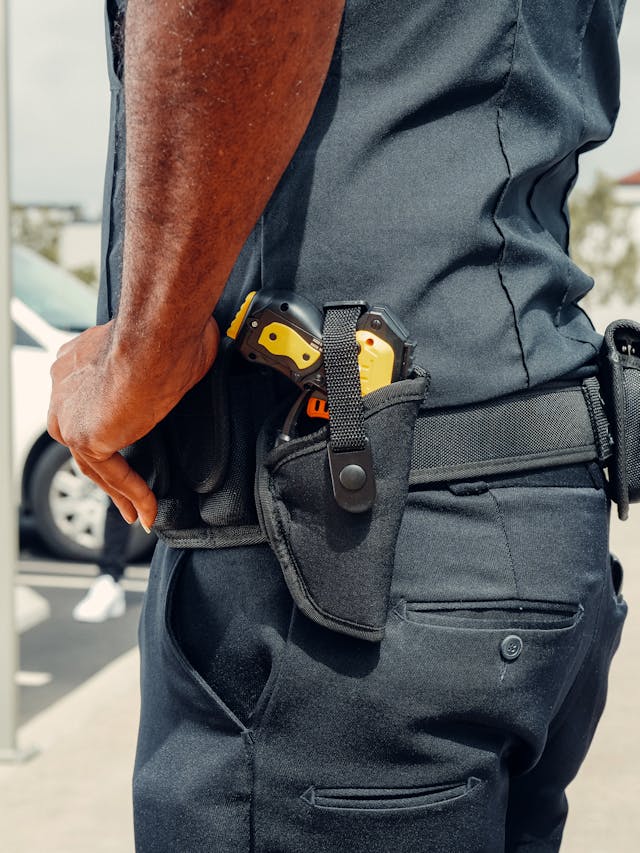In recent years, self-defense tools have gained popularity among civilians seeking a non-lethal way to protect themselves in dangerous situations. Two of the most commonly discussed options are stun guns and tasers. Although they are often used interchangeably in conversation, these devices are quite distinct in both functionality and purpose. Understanding their differences is essential for making an informed choice, whether for personal protection or professional use.
 Stun guns are close-contact devices designed to deliver a high-voltage electric shock to an assailant upon direct contact with their body. They typically come in compact designs, are easy to carry, and work by disrupting muscle function and causing temporary immobility. Tasers, on the other hand, are projectile-based and can incapacitate a target from a distance, usually up to 15 feet, by firing two prongs connected to wires that deliver an electric current. While both tools serve the same core function of self-defense, their mechanisms, reach, and usage differ significantly. If you’re exploring safety tools tailored to various needs and environments, Dekkade offers curated solutions that balance efficiency, legality, and user safety.
Stun guns are close-contact devices designed to deliver a high-voltage electric shock to an assailant upon direct contact with their body. They typically come in compact designs, are easy to carry, and work by disrupting muscle function and causing temporary immobility. Tasers, on the other hand, are projectile-based and can incapacitate a target from a distance, usually up to 15 feet, by firing two prongs connected to wires that deliver an electric current. While both tools serve the same core function of self-defense, their mechanisms, reach, and usage differ significantly. If you’re exploring safety tools tailored to various needs and environments, Dekkade offers curated solutions that balance efficiency, legality, and user safety.
The core technology behind these devices relies on electric current to interrupt the body’s normal neuromuscular communication. With stun guns, the impact is localized and requires physical contact, making it most effective in close encounters. The user must be within arm’s reach of the threat, which presents a tactical disadvantage in certain scenarios. Tasers provide the benefit of distance, allowing users to subdue a threat without physical confrontation. This range can be a game-changer, especially for law enforcement or for civilians in urban environments where space and time are limited.
When it comes to legality, it’s important to note that stun guns and tasers are not uniformly permitted across all jurisdictions. Laws vary from country to country, and even state to state within some nations. Tasers, due to their projectile nature, may be considered restricted or classified alongside firearms in some places. Stun guns, being contact devices, are more widely accepted but may still require registration or a license. Before purchasing either device, it’s critical to review the local regulations and ensure full legal compliance.
From a safety perspective, both tools are considered non-lethal, though they are not completely risk-free. Users must be trained in how to properly handle and deploy these devices to avoid accidents or misuse. Tasers often include training cartridges for practice and may come with laser targeting for accuracy. Some advanced models even record usage data and are equipped with cameras. Stun guns, while simpler in design, require practice in handling under pressure and targeting vital points like the thighs, abdomen, or shoulders for maximum effect.
Another crucial difference lies in battery and maintenance. Most stun guns are rechargeable via USB or traditional plug-ins, with minimal upkeep. Tasers, being more complex, often rely on replaceable cartridges and require regular checks to ensure deployment functionality. Some models are single-use and must be reloaded or replaced after discharge. Understanding your device’s limitations and requirements ensures it will be effective when you need it most.
In terms of price, tasers are generally more expensive than stun guns. This is largely due to their firing mechanism, range, and additional safety features. A high-end taser can cost several hundred euros, while stun guns are available for a fraction of that cost. The choice depends on your environment, confidence level, and how you plan to use the device. For instance, someone living in a rural area might prefer a taser for distance and deterrence, while a city-dweller might opt for a small, discreet stun gun.
Public perception and psychological deterrence also differ between these tools. The visual presence of a taser often deters an attacker before any use is necessary. The sound and spark of a stun gun can serve the same purpose, especially in dark or confined spaces. In either case, these devices provide peace of mind and a sense of control to the user. Choosing the right self-defense tool is ultimately about aligning functionality with personal needs and comfort.
Self-defense is not only about carrying the right equipment—it’s about preparedness. Investing in training, staying alert, and understanding situational awareness are equally important. Both stun guns and tasers can be valuable tools in a larger personal safety strategy. However, it’s essential to treat them with the same respect and responsibility as any security device.
For those just beginning their journey into self-defense, it’s wise to assess your environment, potential risks, and your own readiness before choosing a device. Whether you opt for the simplicity of a stun gun or the extended protection of a taser, knowing how and when to use it is what truly makes the difference. When used correctly, these tools empower individuals to feel safer in their daily lives without resorting to lethal force.
In the end, understanding the practical and legal distinctions between stun guns and tasers helps ensure you’re better equipped, both mentally and physically, to respond to unexpected threats. The right choice isn’t just about the device—it’s about confidence, preparedness, and responsibility.
